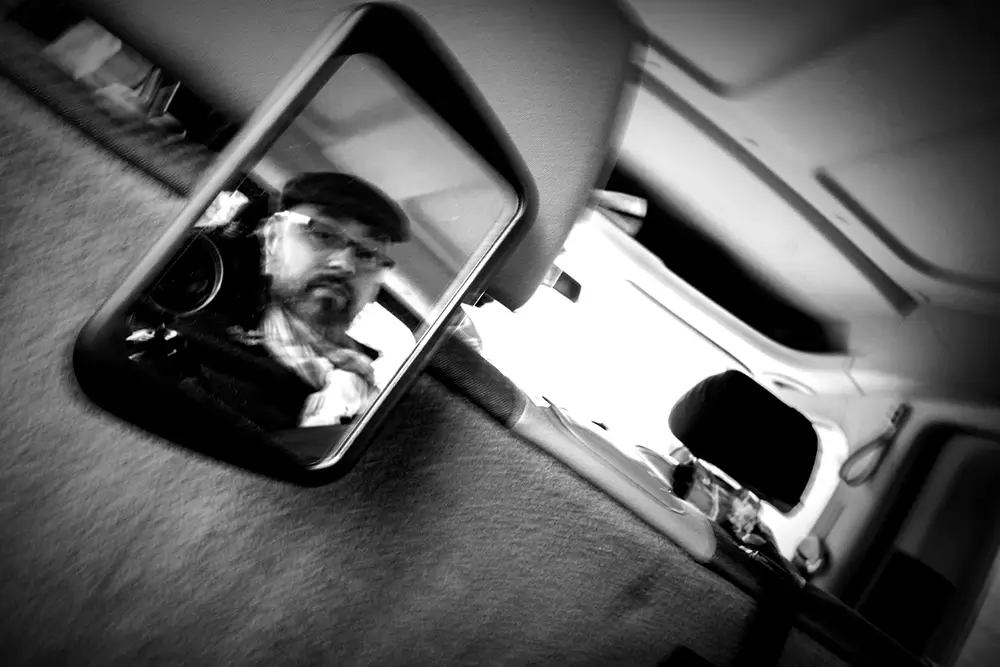My name is Ralph Milewski, and I am a passionate photographer from Germany. Born with
Limb-Girdle Muscular Dystrophy (LGMD), despite significant physical limitations, I have
found my creative voice. My photographic journey is marked by the fixed positioning of my
camera between my legs, just 27 inches above the ground.
Photography, for me, is not just a creative passion but a window to art and self-expression.
As an introverted individual with a strong curiosity for people and their stories, I find in
photography a unique way to simultaneously create intimacy and distance.
The camera, my tool of choice, becomes the medium that strengthens my self-confidence
and elevates my self-worth. Despite moments of frustration and grappling with my own
limits, photography motivates me to creatively transcend my physical constraints and
achieve extraordinary results.
My work not only provides insights into my world from an unconventional perspective but
also invites a reevaluation of existing perceptions. Photography, for me, is more than a
visual medium; it keeps my mind alert and inspires me to develop bold ideas, even if their
realization often relies on support.
Photography compels me out of my comfort zone, helps me overcome social anxieties, and
facilitates the forging of new connections. My view of the world through the lens is unique
and perhaps exactly what can enrich your photo project.
I invite you to consider my photography as a contribution to your project, not out of pity for
my disability, but as an enrichment through a distinctive perspective and the creative
process that I infuse into each image.
Rear Seat Diaries:
The series "Perspectives in Motion" is derived from my "Rear Seat Diaries," captured from a moving car –
my wheelchair-accessible VW Caddy with a rear ramp.
Let me briefly explain the unique setting of these window shots:
I sit in my electric wheelchair at the back of my Caddy, facing forward.
Until recently, the camera was always fixed on a tripod (gooseneck) attached to my wheelchair, positioned
higher in the car to be at eye level with the window. I now use a mini-tripod, which I can position in my left
hand, supported on my wheelchair. The camera is positioned at a right angle to me, aimed at the side
window of the Caddy. The camera was adjusted and set before the trip began. Due to my physical
limitations, I couldn't operate the camera in this elevated position directly. With the mini-tripod, I can now
adjust the camera settings during the ride. I trigger the shots via remote control. I can only see the camera
display sideways in my field of view, as it is flipped up 180°. The shots are taken while driving. Since the
wheelchair is not firmly connected to the vehicle, it is subjected to stronger vibrations and centrifugal
forces. Overall, it's a pretty bumpy affair.
The idea for this project gradually developed out of necessity. If I could lift my arms like any other person,
this series probably wouldn't have come about in this form. From my elevated position in the car, I can only
visually capture a small part of the surroundings. I can turn my head slightly left and right but cannot move
my shoulders or the wheelchair in the desired direction. Photographing from a moving car proved
challenging, especially with a phone and a selfie stick. The results were unsatisfactory as the car window
frame was always partially and never fully in the picture.
The actual development began on the way to Spain in 2022, when I tried to dedicate photos of his
hometown Lyon to a street photographer friend while passing through. Despite improvements to the selfie
stick's position, there were still limitations. A few months later, I began photographing my hometown this
way. By chance, I moved the phone further away from the car window. Upon later review, I noticed some
pictures had the entire window frame as a frame. This caught my attention when I manually corrected the
perspective with Lightroom in early February 2023.
Since then, I have been continuously working on optimizing and further developing this project. Using an
APS-C camera with an extended tripod attached to the wheelchair brought new insights. The mini-tripod
and the ability to now change camera settings during the ride have sparked a creative boost. Despite
challenges such as reflections, unwanted mirror images, sunlight, and disruptive elements like smeared or
rainy windows affecting autofocus. Manual focusing is impossible as I can operate the camera very limitedly,
and the subject constantly changes while driving. A self-built shading device now minimizes some
reflections. However, there are still difficulties with backlighting and dirt on the windows.
The "Rear Seat Diaries" present a diverse mix of my travels and experiences. I invite people to explore this
unique perspective and see the world through my windows. It has long become an ongoing project,
constantly being developed.
Most of the shots are taken during my everyday trips, like drives to the grocery store or the doctor.
Occasionally, I make specific trips just for photography. Targeted subject selection requires a lot of planning
and time, especially since I need someone willing to drive me when I want to.
The compiled images include beginnings with the phone, first steps, and the development with an APS-C
camera, up to the latest attempts within the "Rear Seat Diaries" series to create intentional blur in the
foreground through motion effects using extended exposure times. This approach aims to depict the outer
environment in dynamic blur while keeping the subframe, the interior of the car, deliberately sharp. The
challenge lies in the unavoidable vibrations caused by the vehicle while driving, complicating this endeavor.
Nevertheless, longer exposure times are deliberately experimented with to add a dynamic and artistic
dimension to the images.
